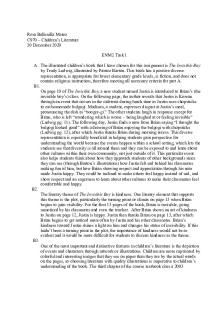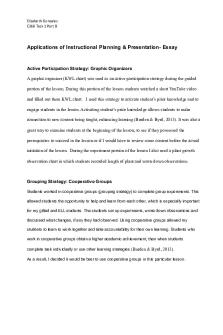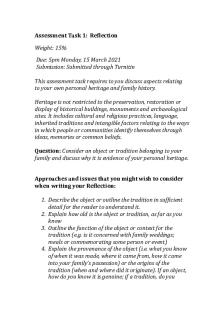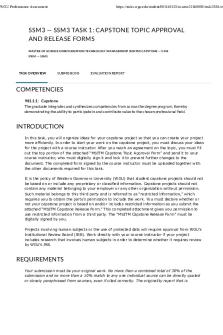ENM2 Performance Assessment Task 1 Part 1 PDF

| Title | ENM2 Performance Assessment Task 1 Part 1 |
|---|---|
| Course | Children's Literature |
| Institution | Western Governors University |
| Pages | 4 |
| File Size | 155.7 KB |
| File Type | |
| Total Downloads | 34 |
| Total Views | 191 |
Summary
Choosing one children's book and answering the prompts....
Description
Rosa Ballenilla Mateo C970 – Children’s Literature 30 December 2020 ENM2 Task 1 A. The illustrated children’s book that I have chosen for this assignment is The Invisible Boy by Trudy Ludwig, illustrated by Patrice Barton. This book has a positive diverse representation, is appropriate for lower elementary grade levels, is fiction, and does not contain religious instruction, therefore meeting all necessary criteria for part A. B1. On page 10 of The Invisible Boy, a new student named Justin is introduced to Brian’s (the invisible boy’s) class. On the following page, the author reveals that Justin is Korean through an event that occurs in the cafeteria during lunch time as Justin uses chopsticks to eat homemade bulgogi. Madison, a student, expresses disgust at Justin’s meal, pronouncing the dish as “booger-gi.” The other students laugh in response except for Brian, who is left “wondering which is worse – being laughed at or feeling invisible” (Ludwig pg. 11). The following day, Justin finds a note from Brian saying “I thought the bulgogi looked good” with a drawing of Brian enjoying the bulgogi with chopsticks (Ludwig pg. 12), after which Justin thanks Brian during morning recess. This diverse representation is especially beneficial in helping students gain perspective for understanding the world because the events happen within a school setting, which lets the students see that diversity is all around them and they can be exposed to and learn about other cultures within their own community, not just outside of it. This particular event also helps students think about how they approach students of other backgrounds since they can see (through Barton’s illustrations) how Justin felt sad behind his classmates making fun of him, but how Brian showing respect and appreciation through his note made Justin happy. They could be inclined to make others feel happy instead of sad, and show respect and an eagerness to learn about other cultures to make their classmates feel comfortable and happy. B2. The literary theme of The Invisible Boy is kindness. One literary element that supports this theme is the plot, particularly the turning point or climax on page 13 when Brian begins to gain visibility. For the first 13 pages of the book, Brian is invisible, going unnoticed by his classmates and even the teacher. After Brian shows an act of kindness to Justin on page 12, Justin is happy. Justin then thanks Brian on page 13, after which Brian begins to get noticed more often by Justin and his other classmates. Brian’s kindness toward Justin shines a light on him and changes his status of invisibility. If this hadn’t been a turning point in the plot, the importance of kindness would not be as evident and it would be more difficult for students to discern kindness as the theme. B3. One of the most important and distinctive features in children’s literature is the depiction of events and characters through artwork or illustrations. Children are more captivated by colorful and interesting images that they see on paper than they are by the actual words on the pages, so choosing literature with quality illustrations is imperative to children’s understanding of the book. The third chapter of the course textbook cites a 2003
publication by Nodelman & Reimer saying that “a picturebook actually has three stories – the story told by the sequence of pictures; the story told by the words; and the complete story told by both the words and the pictures” (Galda, Liang, Cullinan pg. 90). The illustrations in a book complement the words in a book and together, they tell the full story. Illustrations give students a way to visualize the events in the story and expand on the meaning of the words on the page. An example of an illustration from The Invisible Boy can be found on page 13.
In this illustration, Justin is thanking Brian for the kind note he found in his cubby. The illustration on this page is particularly important because, for the first time in the entire book, Brian is depicted with some color. Before this page, Brian’s character was drawn in gray or black and white to signify his invisibility among his peers. Brian is shown with some color after being kind to Justin, emphasizing the theme of kindness in the story. In every illustration after this one, Brian gains more and more color until he is in full color like the rest of the characters. Without the shift in Brian’s color, it would have been more difficult for students to grasp how an act of kindness helped Brian be less invisible. It also would have been difficult to determine that others’ attitudes toward Brian were changing. In this case, the illustration greatly aided students’ understanding of the theme and the plot of the story. B4. The specific genre of The Invisible Boy is realistic fiction. One characteristic that defines realistic fiction is the characterization of its characters. Characters in realistic fiction “exhibit the powers and failings of a real person in a real world” and “change over time as they affect and are affected by the world surrounding them” (Galda, Liang, Cullinan pg. 253). This realistic portrayal of characters makes it easy for readers to relate to the characters and be more interested in the story. Brian is the perfect example of this
characterization. Brian feels sad and left out when he is invisible, which exhibits the feelings of a person in the real world in the same situation. Students would be able to relate to Brian if they’ve ever felt invisible because a feeling of invisibility brings out sadness in children and adults as well. Another characteristic of realistic fiction is a realistic and relevant plot. “The central conflict in a realistic fiction story is one that is probable in today’s world and that matters to today’s young readers” (Galda, Liang, Cullinan pg. 253). The central conflict in The Invisible Boy is Brian’s feelings of invisibility, a conflict that many young readers have surely experienced or are possibly currently experiencing. When the conflict is important to readers, they are more likely to remain invested in the literature and look forward to reading more books.
Resources Galda, L., Liang, L. A., & Cullinan, B. E. (2016). Literature and the Child (9th ed.). Cengage Learning. https://wgu.vitalsource.com/#/books/9781305642362/cfi/0!/4/[email protected]:44.3 Ludwig, T., & Barton, P. (2013). The Invisible Boy. Knopf Books for Young Readers....
Similar Free PDFs

Performance Assessment Task 2
- 4 Pages

(08 Task Performance 1)
- 4 Pages

BSBPMG522 Assessment Task 1
- 9 Pages
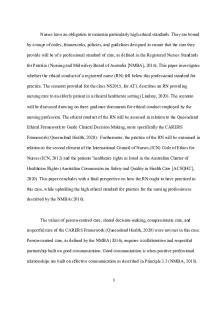
NS2015 Assessment Task 1
- 7 Pages

Assessment TASK 1 – Scenario
- 5 Pages

Assessment Task 1
- 2 Pages

Reflection Assessment Task 1
- 4 Pages
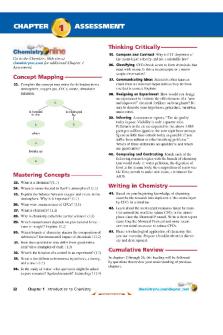
Module 1 - Assessment Part 1
- 2 Pages

Part C - Assessment 1
- 3 Pages

Geo assessment ch-1-performance
- 5 Pages
Popular Institutions
- Tinajero National High School - Annex
- Politeknik Caltex Riau
- Yokohama City University
- SGT University
- University of Al-Qadisiyah
- Divine Word College of Vigan
- Techniek College Rotterdam
- Universidade de Santiago
- Universiti Teknologi MARA Cawangan Johor Kampus Pasir Gudang
- Poltekkes Kemenkes Yogyakarta
- Baguio City National High School
- Colegio san marcos
- preparatoria uno
- Centro de Bachillerato Tecnológico Industrial y de Servicios No. 107
- Dalian Maritime University
- Quang Trung Secondary School
- Colegio Tecnológico en Informática
- Corporación Regional de Educación Superior
- Grupo CEDVA
- Dar Al Uloom University
- Centro de Estudios Preuniversitarios de la Universidad Nacional de Ingeniería
- 上智大学
- Aakash International School, Nuna Majara
- San Felipe Neri Catholic School
- Kang Chiao International School - New Taipei City
- Misamis Occidental National High School
- Institución Educativa Escuela Normal Juan Ladrilleros
- Kolehiyo ng Pantukan
- Batanes State College
- Instituto Continental
- Sekolah Menengah Kejuruan Kesehatan Kaltara (Tarakan)
- Colegio de La Inmaculada Concepcion - Cebu
